For more information on refugees, migrants, and internally displaced persons, click here, and consider signing up for “This Week in Foreign Policy,” a weekly roundup of the most important stories and analysis from the Foreign Policy program at Brookings.
On December 4, 2000, the United Nations declared December 18 as International Migrants Day. The U.N. did so to recognize the increasing number of migrants around the world and to reaffirm member nations’ commitments to migrants’ freedoms and human rights.
Nearly two decades later, compounding issues around the world have led to over 65 million people displaced abroad or within their own borders—the most ever recorded by the United Nations Commission on Human Rights (UNHCR). In recognition of the complexity of this issue and the millions of people displaced around the world, we want to highlight what Brookings scholars are saying about the greatest challenges and successes in global migration today.
The state of refugees, migrants, and internally displaced people by the numbers
In an episode of the Brookings Cafeteria podcast earlier this year, Jessica Brandt, fellow in Institutional Initiatives, provided context on the scale of the global refugee crisis and identified steps that the United States and international community should take in order to provide relief. Citing data from a UNHCR report, Brandt pointed out that on average, 24 people per minute, per day worldwide were forced to flee their home in 2015. About 1 out of every 113 people worldwide were either asylum seekers, refugees, or internally displaced, and about half of the world’s refugee population was under the age of 18.
Two-thirds of the world’s displaced population actually remain within the borders of their own country, as Elizabeth Ferris, nonresident senior fellow in the Foreign Policy program, points out. In June, Ferris unpacked the numbers of global refugees, and noted that the internationally displaced population—which accounts for most of the growth in overall global displacement—has grown from 25 million in 1992 to 40.3 million in 2016 (although at least some of that increase is likely due to greater awareness of internal displacement and better tracking).
The Syrian civil war
After almost 7 years of civil war, half of Syria’s population has been displaced, creating over 6 million refugees, about a third of the world’s total refugee population. Turkey hosts half of these refugees, with large numbers in Lebanon and Jordan, too, the “frontline” states on Syria’s border. Lebanon hosts more than 1 million refugees, which amounts to more than one in five people in the country. In Jordan, that number is one in ten at least.
According to Brandt and co-author Robert McKenzie, large flows of displaced people into these neighboring states causes real strains. They note “the sheer scale of the refugee crisis poses unparalleled humanitarian, economic, and political challenges in an already fragile region.”
Many of these refugees have limited access to labor market opportunities, education, and other public goods and, according to Brandt and McKenzie, are often forced to work in the “grey economy” where they are vulnerable to exploitation. They write that lack of resources available for refugees, “compounded by a myriad of legal, bureaucratic, and administrative challenges,” makes it difficult for international NGOs to provide humanitarian assistance on-the-ground.
Just last week, Brookings hosted an event with a young Syrian refugee, Saria Samakie, who candidly discussed his story and experience as a refugee in America. In the short clip below, Samakie answers a question from the audience on when and under what conditions he believes people will begin to return to Syria.
Other crises around the globe
While Syria is understandably a focal point in the refugee crises, there are many other parts to the world’s migration story. We should not overlook the people attempting to cross the Mediterranean from Libya to Italy, Rohingya Muslims in Myanmar fleeing religious persecution into Bangladesh and India, and thousands of Dominicans stateless in the Caribbean, about each of which Brookings scholars have written.
After Syria, more refugees come from Afghanistan than any other country in the world. Many are in Pakistan, but in a recent analysis, Brookings Nonresident Fellow Madiha Afzal explains how over 600,000 have already repatriated back to a country that is still under attack by the Afghan Taliban. According to Afzal, this “voluntary” repatriation is often enforced through police extortion, bribery, and the confiscation of legal documents, and supported by Pakistan’s narrative that Afghan refugees are economic burdens, criminals, and terrorists.
Cities are on the frontlines and should be part of the solution
Now more than ever, refugees are going to cities and they are staying longer. Cities would like to step up and play an even bigger role in the U.N.’s global compact on migration, but President Trump “wants out,” in the words of Jessica Brandt.
Brookings Centennial Scholar Bruce Katz and Jessica Brandt explain that many of the elements critical to an effective emergency response, as well as to long-term integration, are designed, delivered, and financed at the local level. Those elements include housing, healthcare, education, skills training, and social services of every sort.
Today, roughly 60 percent of the world’s 22 million refugees and 80 percent of the world’s internally displaced population reside in cities rather than in camps. This puts a heavy strain on cities, especially as the length of displacement increases. During the early 1990s, the average length of displacement was nine years. Today, it is roughly 20. At the end of last year, more than 11 million refugees—two-thirds of the global total—were in a protracted situation.
Brandt explains that cities need a seat at the table when developing an approach to the refugee and migrant crisis. She also argues that the UNHCR should incorporate towns and cities with sizeable refugee populations into the testing and development of new approaches. UNHCR should also encourage U.N. member states to engage in meaningful collaboration with municipal authorities by facilitating the flow of technical expertise and resources to towns and cities. Likewise, Brandt recommends that the international humanitarian community should develop ways to source innovative approaches to refugee integration directly from cities.
The politics of migration and the refugee crises
In his first year in office, President Trump has tried on multiple occasions to fulfill his campaign promise of “a total and complete shutdown of Muslims entering the United States.” Brookings experts have written extensively (here, here, and here) on the different renditions of these travel bans, issued via executive order, as well as their battles in court. As it stands today, the Supreme Court has granted a full stay on the third version of Trump’s executive order while its legality is being challenged in appeals courts.
Brookings scholars rebutted arguments that these orders are necessary to ensure the safety and security of Americans. As Brandt explained on the Brookings Cafeteria podcast in March, America already has an extremely thorough vetting system for refugees, and of the nearly 860,000 refugees resettled by the United States since 9/11 only three individuals have been convicted on terrorism-related charges (all were for plots outside of the United States and none were successful).
Nonetheless, Americans are split in their support for refugee resettlement within the United States. A survey conducted during the 2016 presidential race by Brookings Nonresident Senior Fellow Shibley Telhami showed that only 59 percent of Americans support the United States taking in refugees from conflict-prone areas in the Middle East after they have been screened for security risks. Studies also show that Europeans are more likely to be opposed to immigration than people from any other continent.
In contrast with some of President Trump’s assertions from the campaign trail, David M. Rubenstein Fellow Dany Bahar illustrates the positive link between immigration and economic growth. Bahar explains that while immigrants represent about 15 percent of the general U.S. workforce, they account for around a quarter of entrepreneurs and a quarter of investors in the United States, and that over one-third of new firms have at least one immigrant entrepreneur in its initial leadership team.
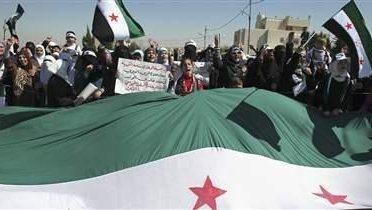
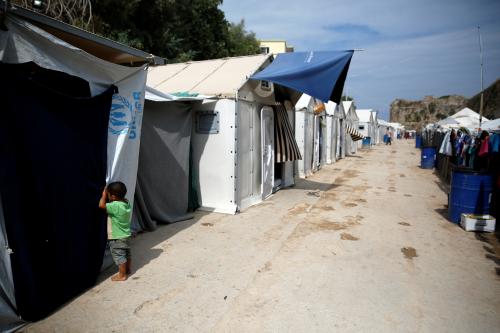
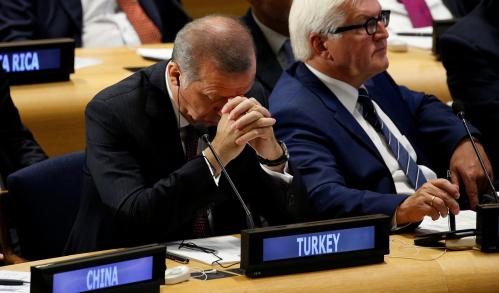

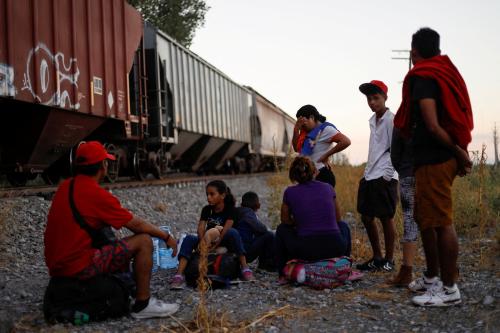
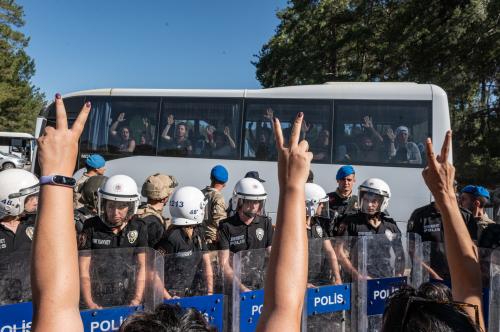
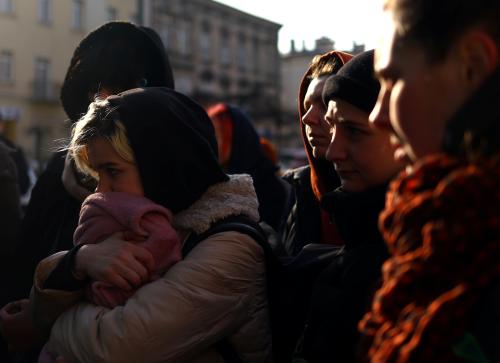
Commentary
Problems and solutions to the international migrant crisis
December 18, 2017